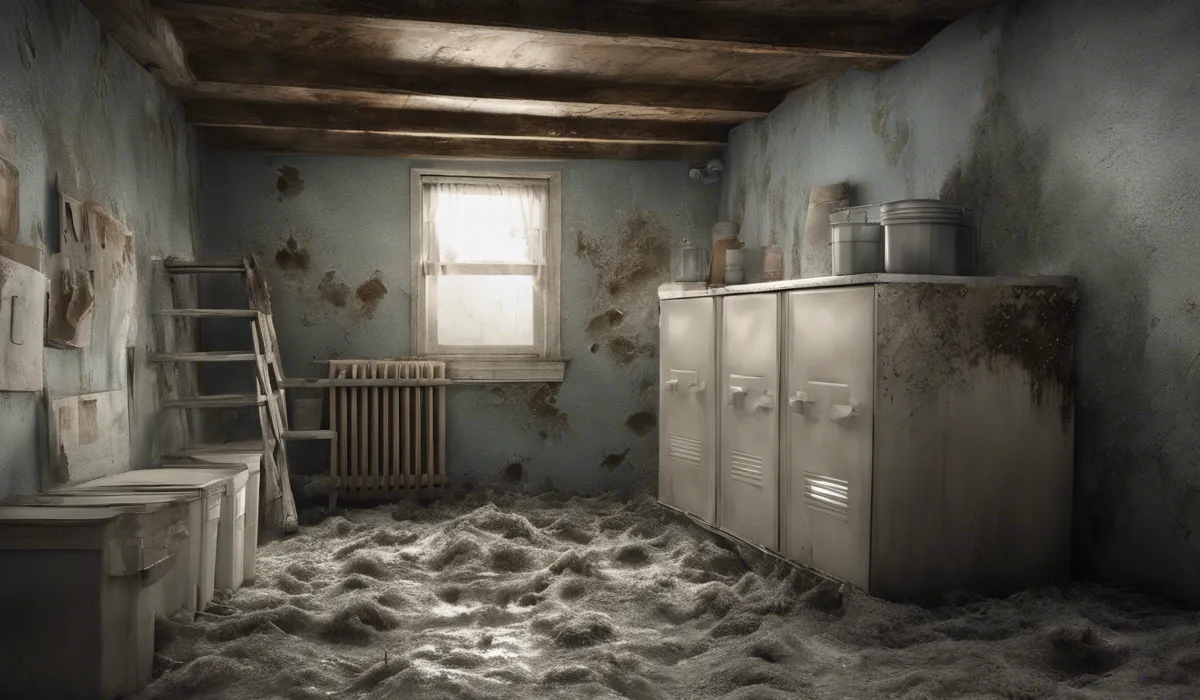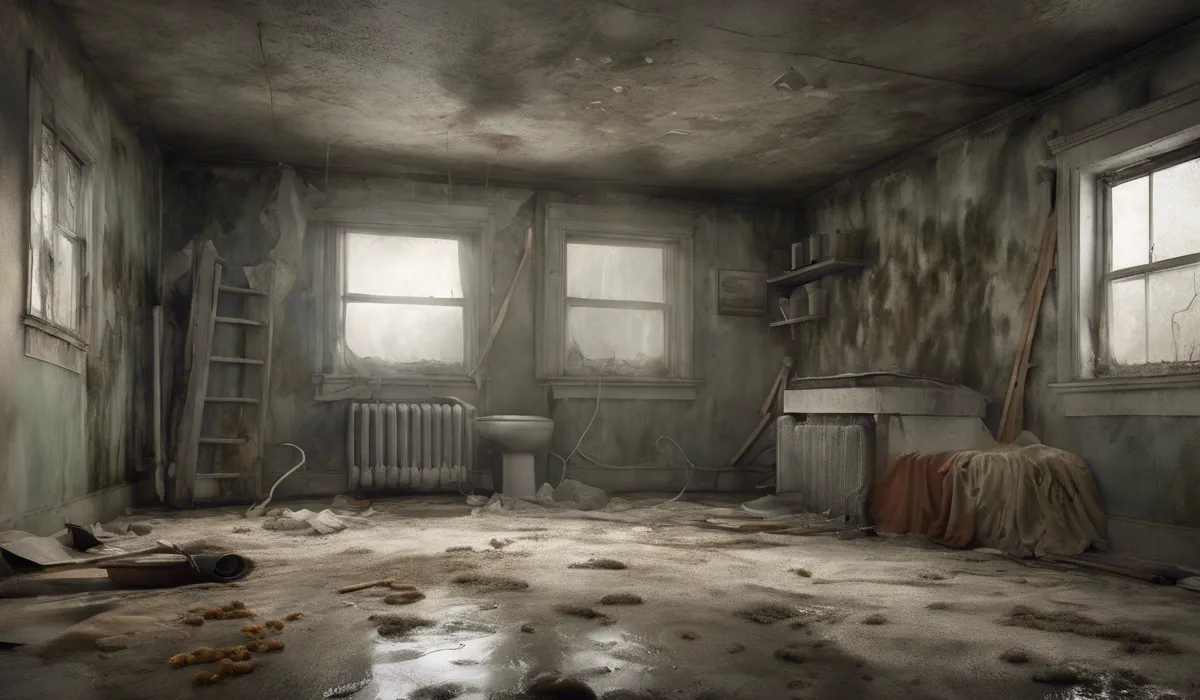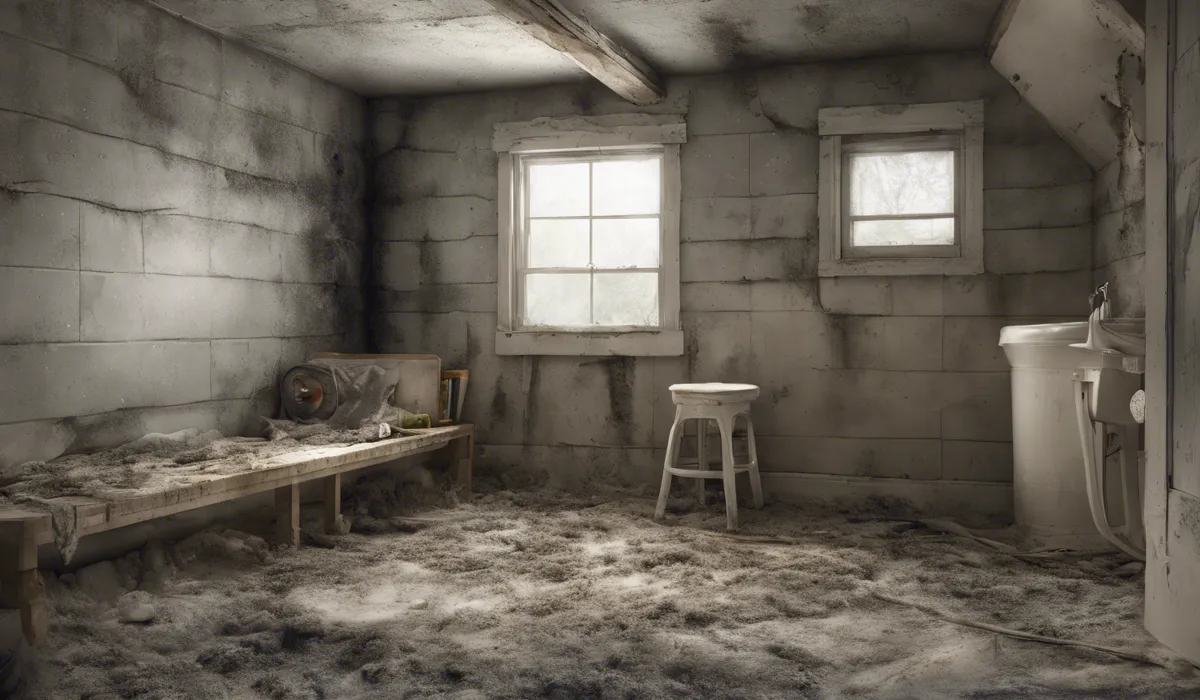Mold in your basement can affect upstairs areas through air circulation, spreading spores that may cause health issues or unpleasant odors. Proper ventilation and mold remediation are crucial to prevent its spread.
Understanding Mold and Its Ability to Spread

Explanation of Mold and Its Growth Conditions
Mold is a type of fungus that can grow both indoors and outdoors. It thrives in warm, damp, and humid conditions.
Basements often provide the perfect environment for mold because they can be prone to moisture and have less airflow compared to other parts of a house.
Mold grows by releasing tiny spores into the air, which are invisible to the naked eye.
How Mold Spores Travel Through the Air?
Mold spores are lightweight and can easily become airborne. Once in the air, they can drift throughout a home, moving from the basement to the upstairs areas.
Any movement of air, from doors opening to the operation of fans, can facilitate their spread.
The Impact of HVAC Systems on Mold Distribution
Heating, ventilation, and air conditioning (HVAC) systems can play a significant role in distributing mold spores.
When these systems pull in air from a mold-infested area, they can circulate the contaminated air throughout the house, including upstairs living spaces.
Porosity of Flooring and Ceiling Materials
The type of materials used in the construction of a house affects how mold spreads. Porous materials, like wood and carpet, can hold moisture and allow mold to grow within.
These materials can then act as a reservoir for spores to be released into the air.
Common Pathways for Mold Movement Within a House
Mold can move through a house in several ways. It can travel through open doorways, vents, and ductwork.
It can also spread by attaching to clothing, shoes, or pets, moving from the basement to other parts of the home.
Health Implications of Mold in Living Spaces

Short-term Health Effects of Mold Exposure
Short-term exposure to mold can cause a variety of symptoms, including sneezing, coughing, throat irritation, and watery eyes.
Some people may experience skin rashes or an increase in asthma symptoms if they are sensitive to mold.
Long-term Risks and Potential Health Conditions
Long-term exposure to mold can lead to more serious health conditions. It can cause respiratory issues and worsen conditions like asthma and allergies.
Continuous exposure may also lead to chronic sinusitis or other respiratory infections.
Vulnerable Groups and Heightened Sensitivity to Mold
Certain people are more vulnerable to the effects of mold. This includes young children, the elderly, and those with compromised immune systems.
People with chronic lung illnesses or mold allergies are also at a higher risk of experiencing severe reactions.
Signs and Symptoms of Mold Exposure in Residents
Residents may notice musty odors or see visible mold growth, which are clear signs of a mold problem.
Health symptoms such as persistent coughing, headaches, or feeling tired all the time can also indicate mold exposure.
Indoor Air Quality and Its Relation to Mold Presence Upstairs
The quality of the air inside a home is directly affected by the presence of mold. If mold is growing in the basement, it can reduce the overall air quality upstairs, leading to potential health problems for the residents.
Mitigation and Prevention of Mold Spread

Professional Mold Assessment and Remediation
If you suspect mold in your home, it’s important to get a professional assessment.
Mold remediation experts can identify the source of the mold, determine the extent of the issue, and recommend the best course of action to remove it and prevent future growth.
Improving Basement Ventilation to Limit Mold Growth
Proper ventilation is key to limiting mold growth in the basement. Installing exhaust fans, opening windows when possible, and using dehumidifiers can help reduce moisture and prevent mold from thriving.
Importance of Controlling Humidity Levels Throughout the House
Maintaining low humidity levels throughout your home is essential to prevent mold growth.
Using air conditioners during humid seasons, fixing leaks promptly, and ensuring that bathrooms are well-ventilated can all help control humidity.
Sealing and Insulating to Prevent Inter-level Mold Migration
Sealing gaps and insulating areas around pipes and vents can prevent mold spores from moving from the basement to upstairs areas.
It’s important to make sure that the basement is properly sealed from the rest of the house.
Regular Cleaning and Maintenance to Detect Early Signs of Mold
Regularly cleaning your home, especially areas prone to moisture like the bathroom and kitchen, can help you spot signs of mold early.
Inspecting the basement regularly and addressing any signs of water damage quickly can prevent mold from spreading upstairs.
FAQs About Mold Affecting Upstairs from Basement
Can mold in my basement spread to upstairs living areas?
Yes, mold in the basement can spread to upstairs areas through air circulation, carrying mold spores throughout the house.
Will mold in the basement cause health issues in the rest of my home?
Mold spores from the basement can contribute to health issues such as allergies and respiratory problems if they spread to upstairs living spaces.
How can I prevent mold in the basement from affecting the upstairs?
Prevent mold spread by ensuring proper ventilation, using dehumidifiers, and promptly addressing any mold growth through professional remediation.
Can mold odors from the basement reach the upstairs areas?
Yes, unpleasant odors from mold can travel upstairs as air circulates between floors.
Is it necessary to check for mold upstairs if it’s found in the basement?
Yes, if mold is present in the basement, it’s prudent to inspect upstairs areas as well, since spores can easily disperse through the home.
Final Thoughts
Mold in the basement can indeed impact upper levels due to air movement, carrying mold spores that potentially lead to health issues and bad smells.
Ensuring effective ventilation and addressing mold problems promptly are essential strategies to halt its ascent and maintain a healthy indoor environment.
